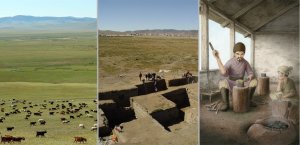Presented By: Museum of Anthropological Archaeology
How to build a city in the steppes: The transient phenomenon of urbanism on the Mongolian Plateau during the Mongol World Empire
Dr. Susanne Reichert, Feodor Lynen-Fellow of the Alexander von Humbolt-Foundation and Academic Affiliate, History of Art and Museum of Anthropological Archaeology at University of Michigan

The study of urbanism in the Mongolian steppes sounds like a paradox, since the image of the marauding nomad living in tents still prevails. And yet Mongolia, with well over 200 abandoned settlement sites with permanent architecture, residences, fortifications and ramparts, as well as hundreds of Buddhist monasteries, offers enormous potential for the study of cities and settlement networks. The ancient sites of this region survived relatively unscathed by modern urbanization and farming activities and form an untapped source of information and an incredibly rich archive for the study of urbanism in the steppes. Astonishingly, international scholarship has afforded little attention to them. This talk will focus on the only two cities from the time of the Mongol Empire (13th and 14th century CE) on the Mongolian plateau: Karakorum, the capital in the Orkhon Valley, and Khar Khul Khaany Balgas, a city with a similar layout in the Khanui Valley. A closer look into systems of craft production and acquisition of a working force will reveal how the Mongol Khans were able to build these cities within a relatively short span of time and within a region without a continued history of urbanism.